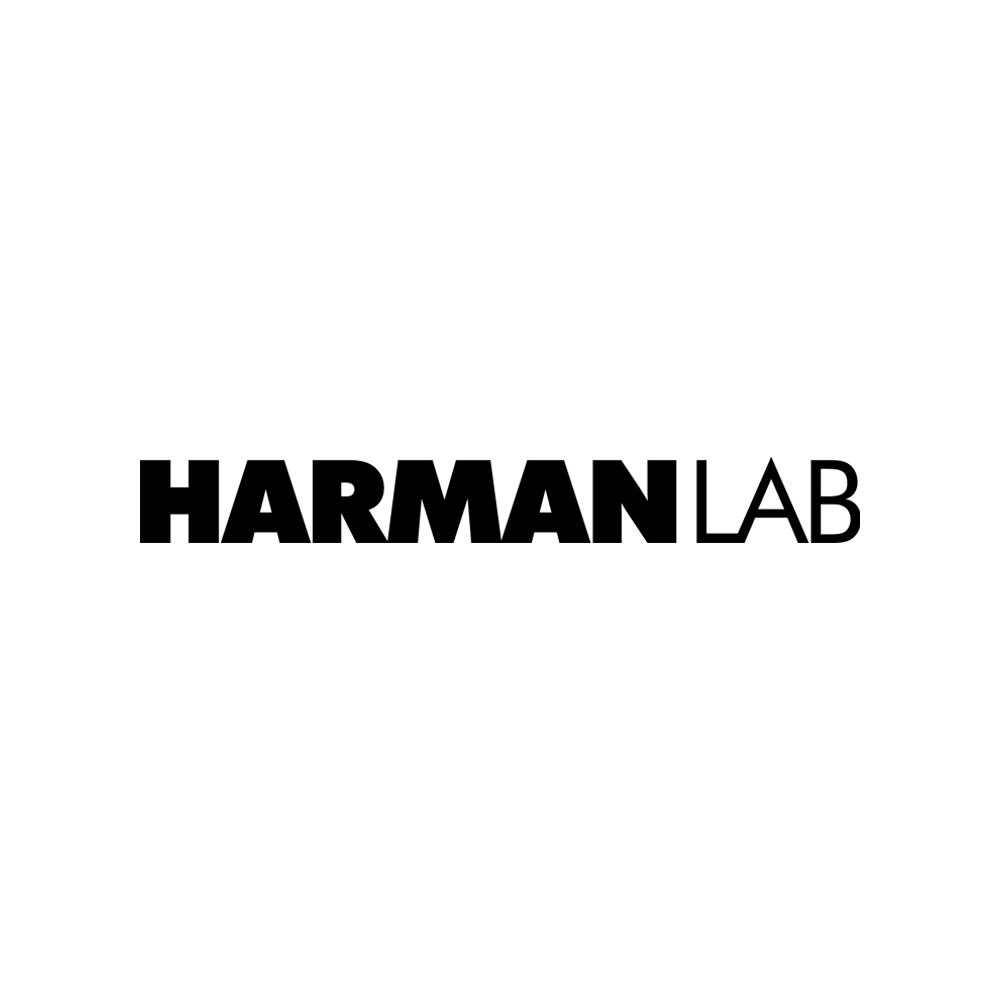Rodeo Cowboys Posted On 9th January 2024 To Magazine & Stories

The Nod
The rope is thick and heavy, and coated with resin applied to heat it up and make it sticky. The cowboy wraps this bullrope around his right hand and ties himself in. A thin leather glove protects him from burning his hand if the rope slips. He settles himself on the back of the 1500 pound Brahman bucking bull named Spooky Lukey, and Spooky Lukey hasn’t been ridden yet this season, or last year for that matter. When he’s set, he gives The Nod. The Nod starts off one of the greatest sequences in all of sport, right up there with a base-runner trying to steal home, or a punt returner in football seeing an opening.
A Six Second Swirl
The gate flies open and the bull jolts forward as if on springs suddenly released. It’s a six second swirl of bull, sweat, and dust, that ends with the cowboy being tossed onto the ground into a pile. Six seconds seems like an eternity on the back of the bull, but you need to stick an eight second ride to get a score, so the cowboys weekend is finished. He heads to the first aid tent to get his arm checked out from the fall, and after that he drops next door to a little studio set up next to the cattle stalls.
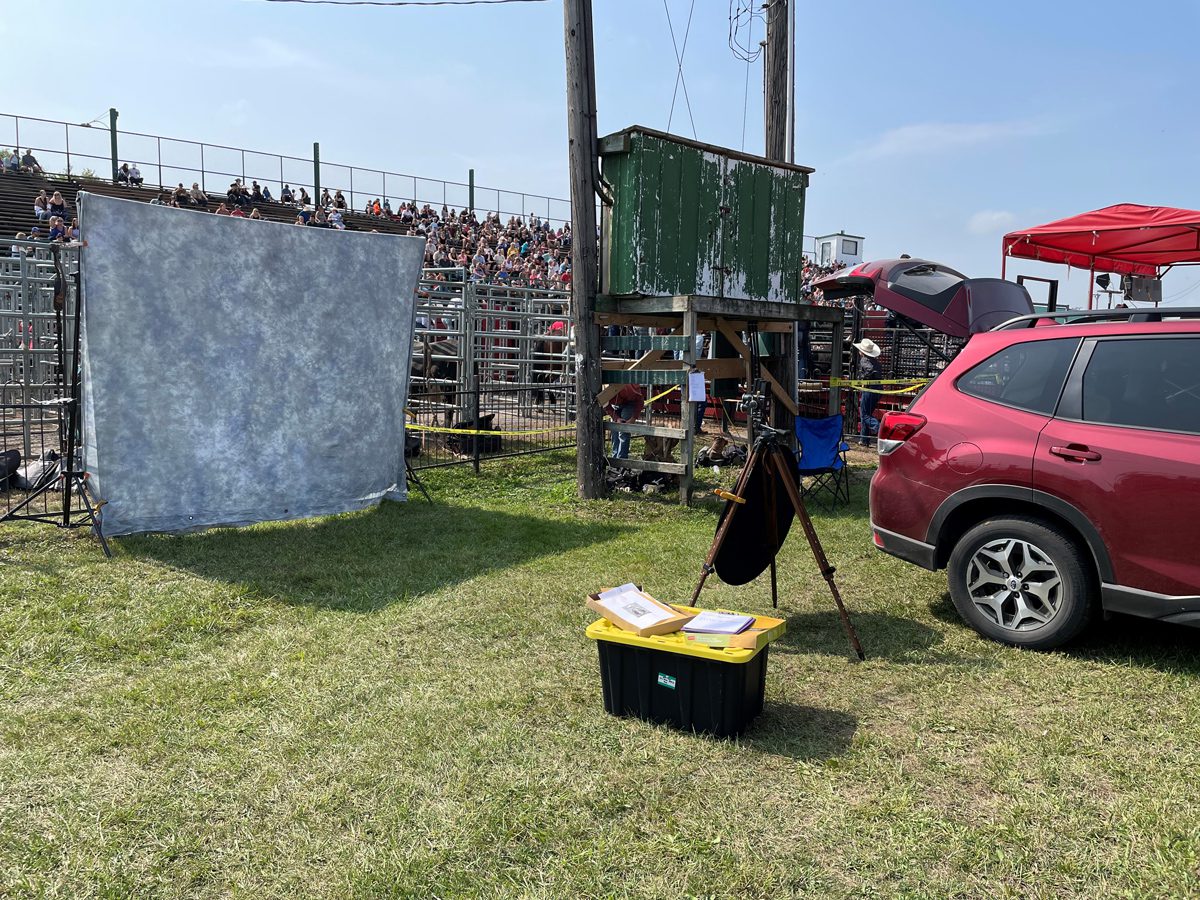
I Love The Action
This is where I come in. I’m creating a series of black and white portraits of grassroots rodeo cowboys, shooting in a little studio area right next to the corral. This is my second year working on the portraits, although I did shoot rodeo action for a number of years, as I love the action.
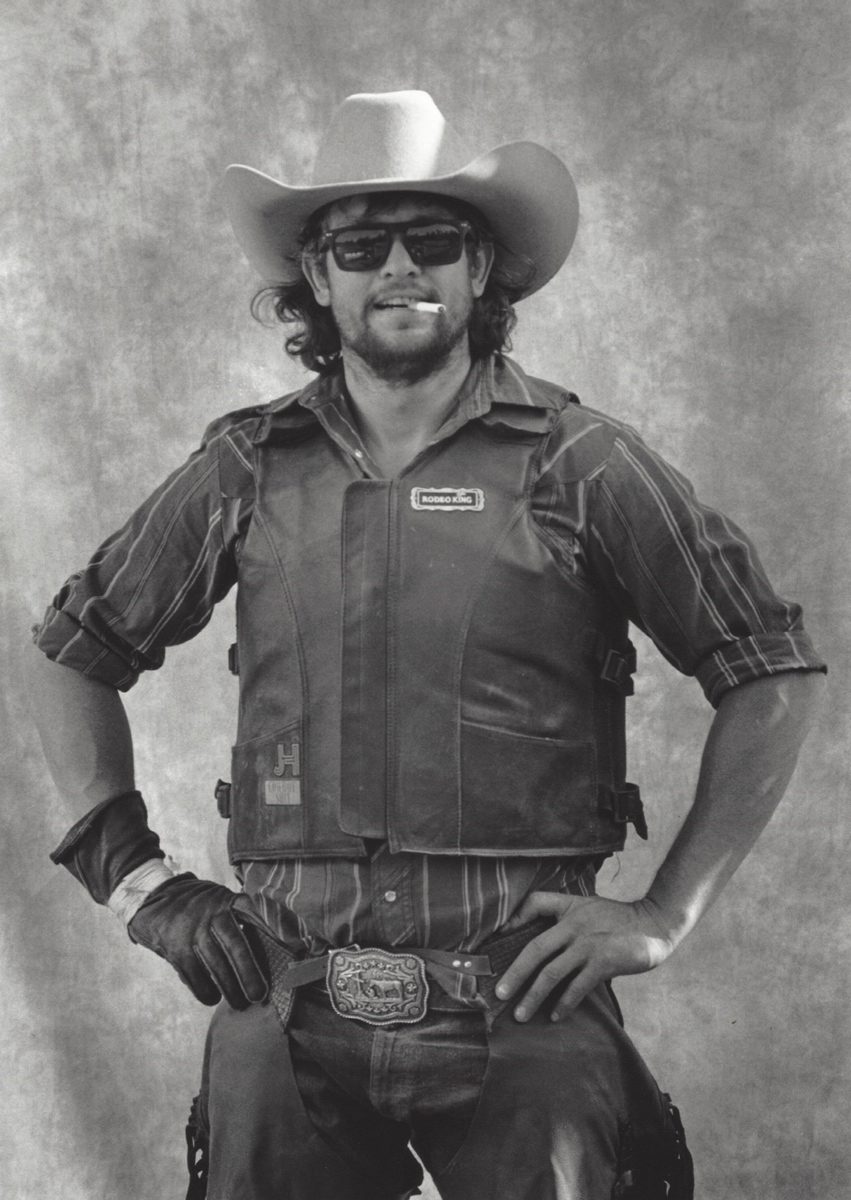
Consistency
Although each picture is different, they tend to look the same, or at least similar. I guess that’s my style for this project. The advantage of photographing in a similar manner is consistency, and with consistency, comes progress. You can take the photos, analyze the results, then try to make small improvements the next time out. It’s a bit of a process since the rodeo’s are often a couple weeks apart, plus I need to process the film, make contacts and selections, and then at least make work prints to really see the results. I always make darkroom prints as I currently have no interest in scanning the negatives although this works for some people. I copy the final prints for social media, but the final end result is always an actual print, not a digital file.
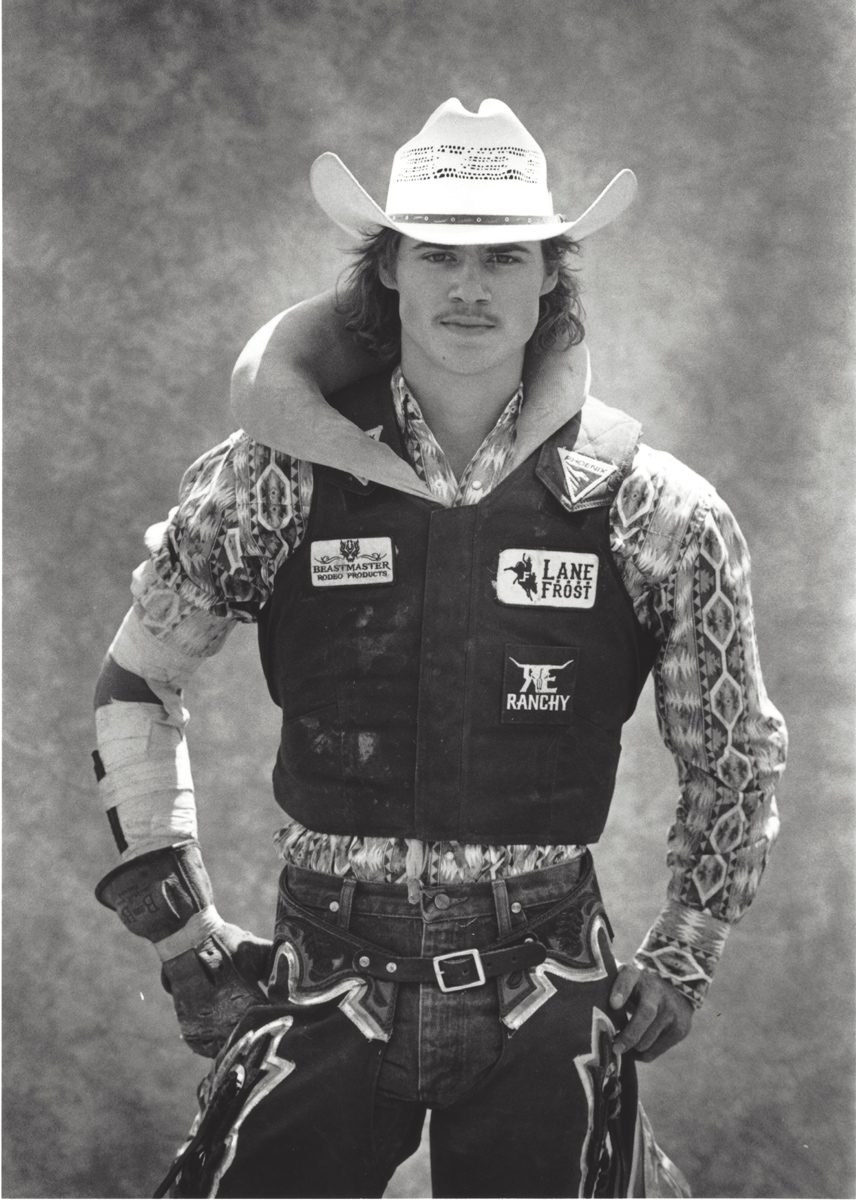
Small Changes
I’ve learned that the repetition along with small incremental changes and improvements is the best way forward for me. Plus, you’re never really repeating yourself as the lighting is somehow different or I use different lenses, as I work through the process. In theory the images from the last rodeo of the year should be the best ones, but sometimes the stars align and I get a shot that I’m really happy with at other times. Again it’s a process where you do some work, analyze how it went, make the changes best you can, and then do some more work and see the improvements. I’m working with subtle changes, maybe adjusting exposure by 1/3 of a stop, or changing the tonal range with a yellow filter, or adding a half minute to the development time. Small changes, small improvements…. and then try again.
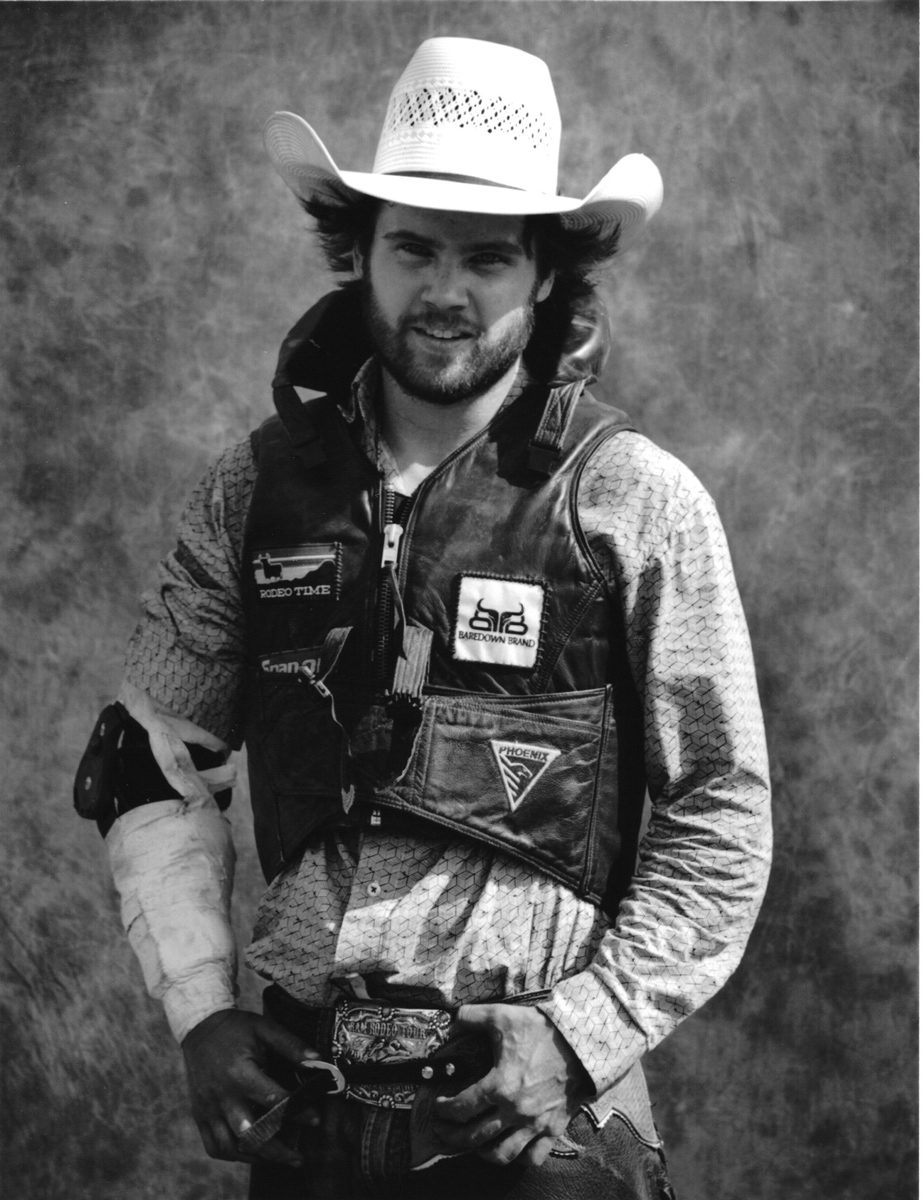
Canadian Heritage
I see the cowboys, not only as a group working with cattle, but as a sub-culture that represents an ever shrinking group with strong ties to Canadian heritage but with a questionable future and place in modern society. I want to photograph them while there’s still some around to photograph. Everything about this project excites me. I love hanging with the cowboys, watching the rodeos, the user experience of working with some of the finest cameras ever made, the best films and papers…. I even have two of the nicest enlargers, both a joy to work with.
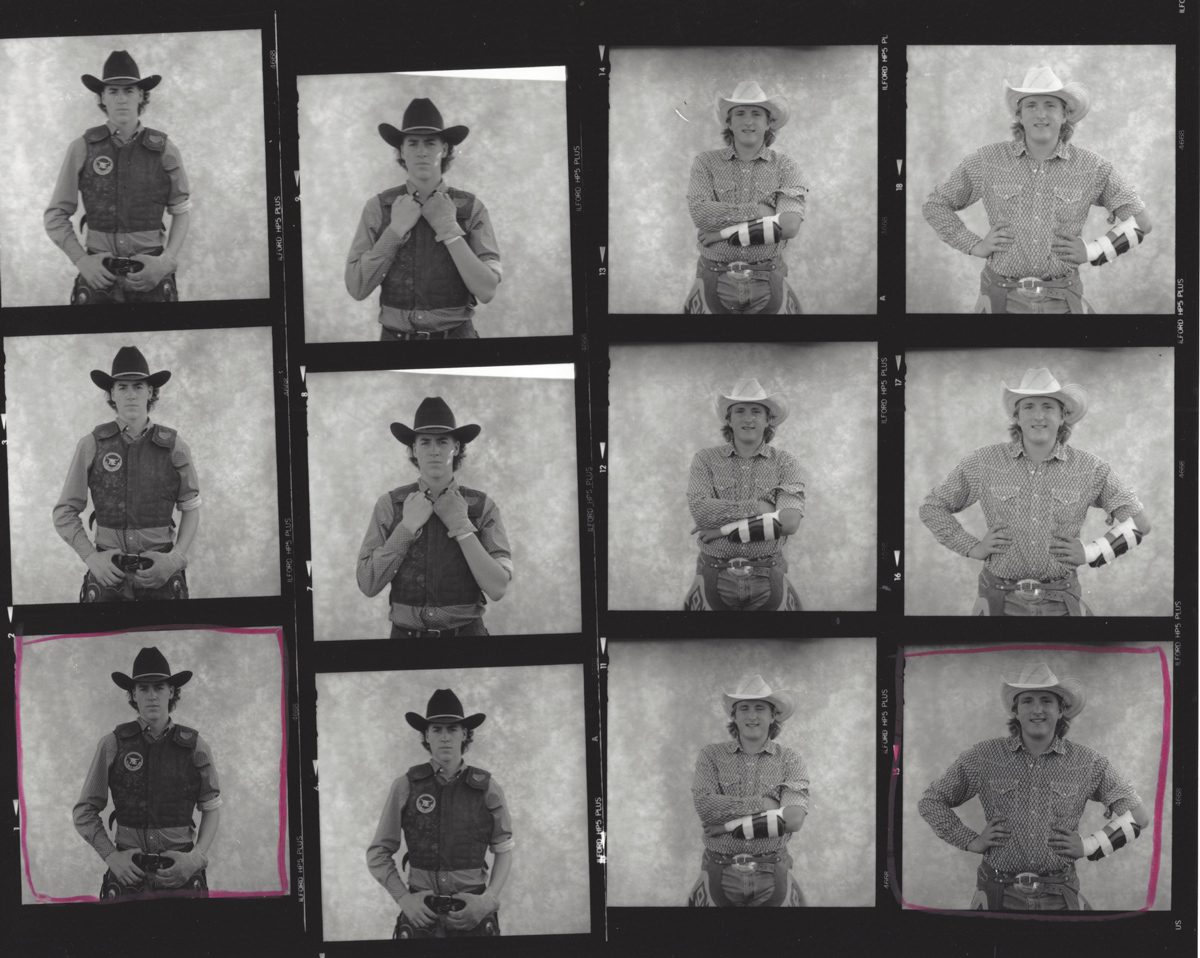
Not Fighting It
For me it’s all about the “user experience”. This is something I learned when working with the camera group at Sony where I was a national manager in Canada. So the user experience is important right through the process. I’m fine if the camera is complicated to use, but I want to enjoy using it, not fighting it. With me it’s not just the final results, I really want to feel satisfaction when I’m taking the shot as well. This has taken me down some interesting rabbit holes.
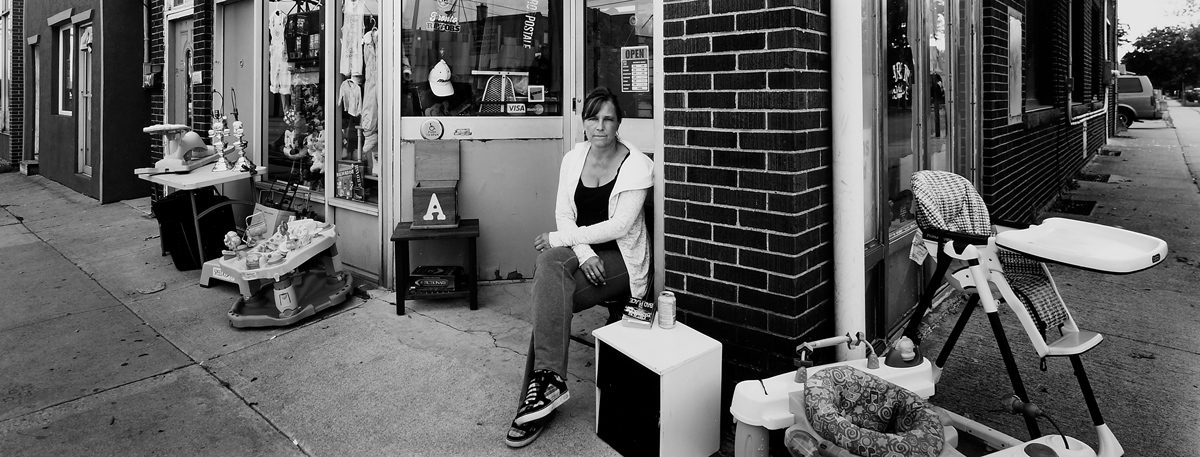
Equipment
I use a Berlebach wood tripod, why, because they’re great, I love the feel and look of the wood, and they have fewer vibrations than a carbon tripod. Put a Gitzo three-way head on it, and it’s just a joy to use. My camera choice is similar, for the most part I’m using a Rollei FT that I bought new a few years ago. This twin lens camera is the rarer tele version and has a non-changeable 135mm f4 lens on it, giving me a great angle of view, and comfortable working distance. It’s a great camera but is slow to reload and I often wonder why not shoot these on a Hasselblad with interchangeable backs, and a 180mm lens. I guess as photographers we’re never happy.
The Dust Is Crazy
I try to set my studio up with the backdrop facing north-east, this should put the subject totally back-lit in the late afternoon when I’m doing my portraits. Again it’s subtle changes that I’ve made over the shoots, like doubling up the background so the light doesn’t shine through it, or worse shadows of the corral bars like the first time I set up. Also you have to really weigh down the stands, and tie them off or the whole studio will take off like a kite in the winds. And while talking about the winds, the dust is crazy. Horses, tractors, cattle, all stir up the dust and the wind carries it right into my cameras. When I started, I kept the camera on the tripod but now I keep it in a plastic bag, inside a large plastic storage bin, and just pull it out when the cowboy is standing in the shooting area. All this in an effort to keep the dust down.
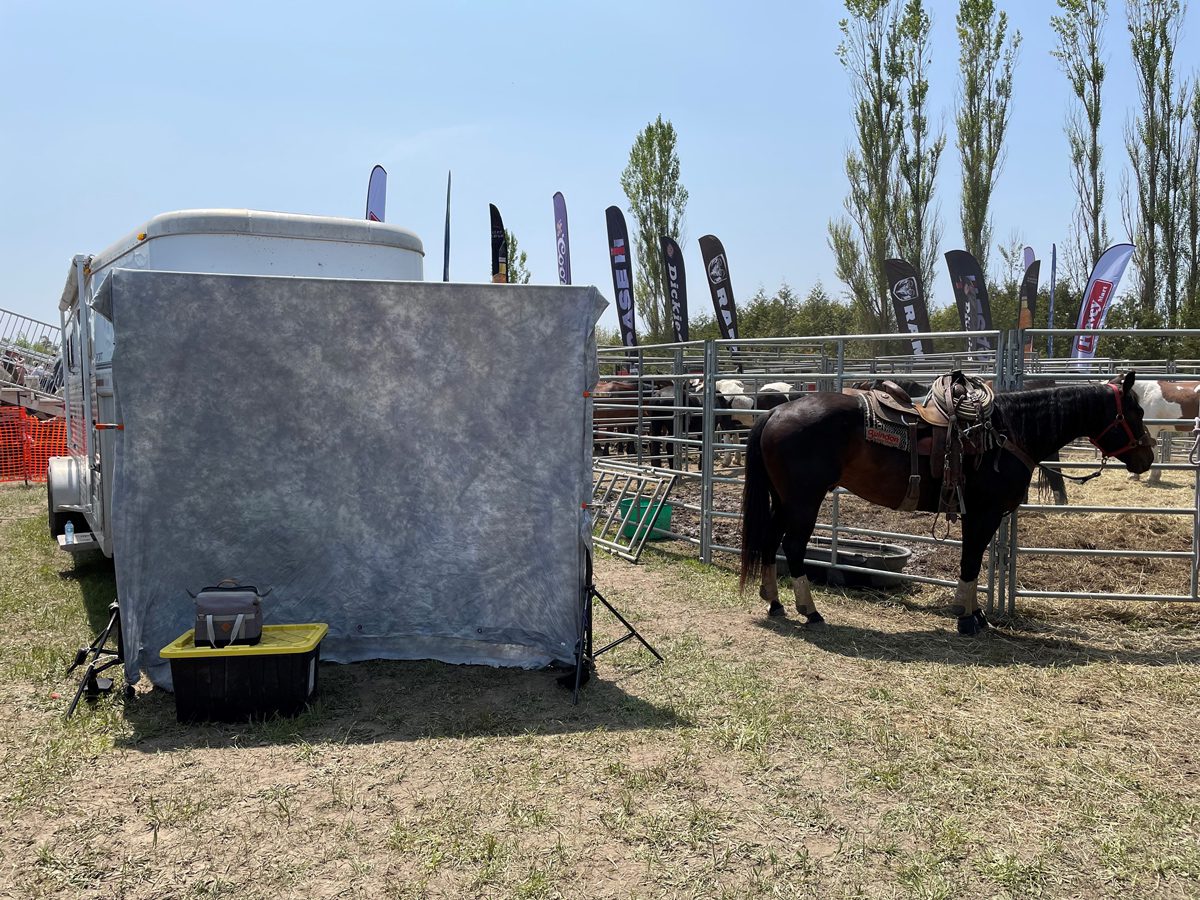
Camera's
As I said, the main camera is the 120 Rollei, but the dust caused an issue and it went in for service, so I shot the next rodeos on 35mm using either a Nikon F3 with an 85mm or 135mm, and backing that up with a Leica M6 with a 50mm.
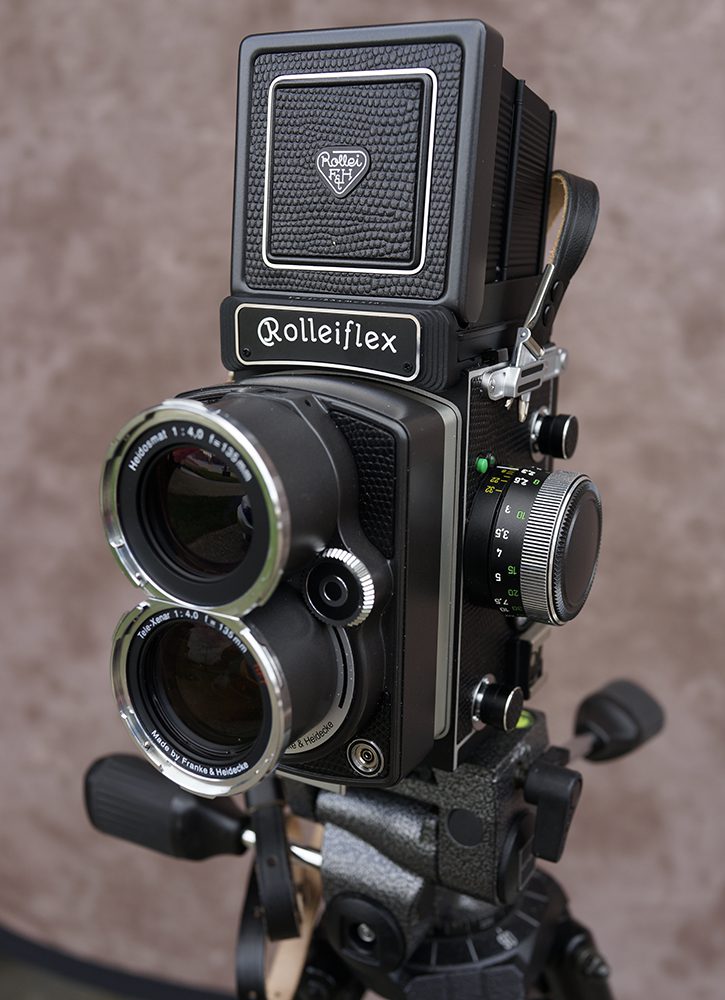
The Quality I Want
Since I can use any film I like, the choice comes back to the user experience and using what you really enjoy shooting and printing. I used Delta 400 for a number of years in the past but recently switched to HP5+ as my main film. I use the HP5+ for the 120 work and have been using it in 35mm as well. However, I sometimes switch to a slower, less grainy film for the 35mm work, like Delta 100 or FP4+, but in 120 I stick with the HP5+ as it gives me the quality I want, with a great micro-contrast. The grain is fine and the details wonderful. In theory the grain in the 35mm film should be fine too, but like everyone who prints their own work…. shooting with the lightweight 35mm cameras, with their easy to use features, are great when you’re in the field shooting, but back in the darkroom, you always wish it was a bigger negative.
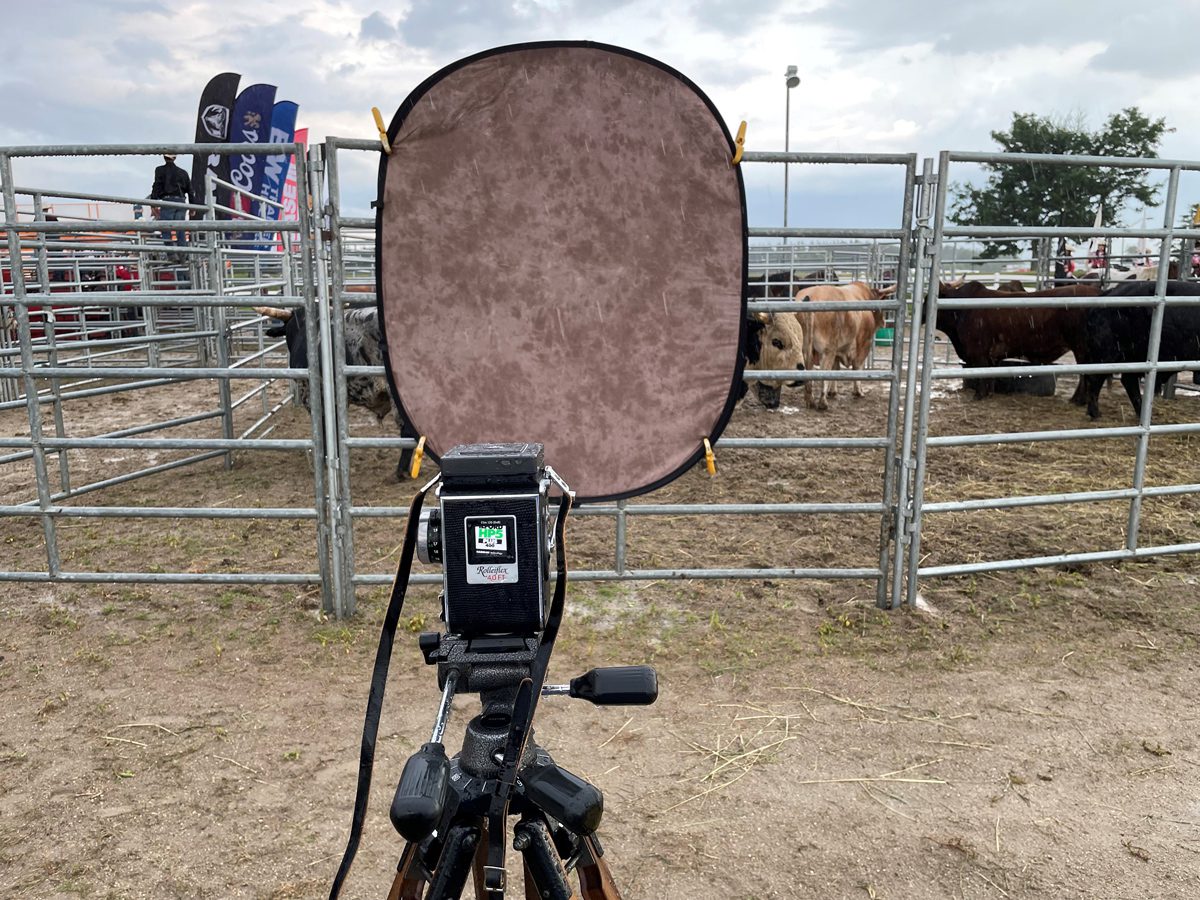
Settle For Grainier Shots
When I first tested out the idea of the project I was shooting with a 4x10 panorama camera. The big negative is a dream but the dust on large format made it unusable. I toyed with the idea of shooting 5x7, but again the dust is the challenge. So I settle for grainier shots, but the convenience of roll film and the 120 negative. You can’t really go wrong with HP5+ on 120 anyway. The box speed of the film is ISO 400, I use it at ISO 250 which gives me a working exposure of 1/250 at f5.6 1/2 in full sun but totally backlit, with no filtration.
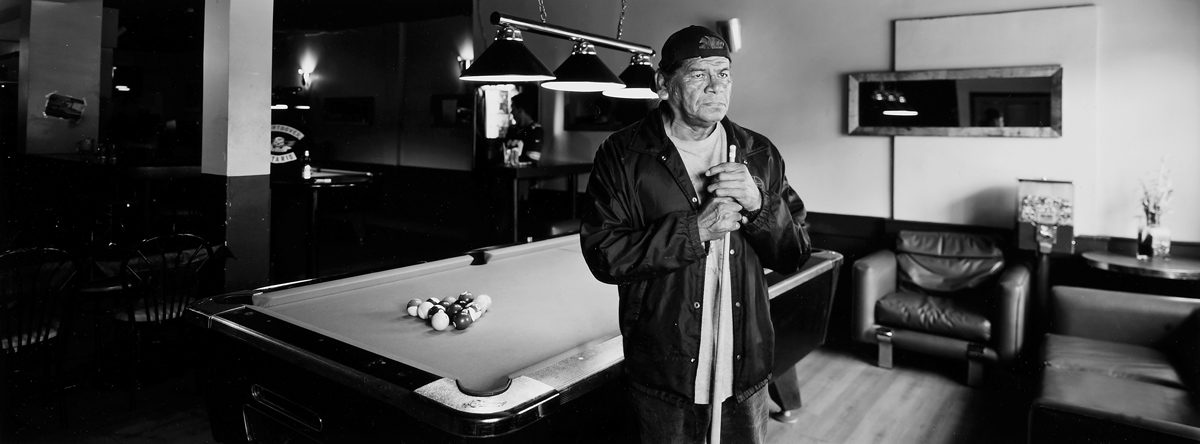
The Sweet Spot
That aperture is the sweet spot on the camera, and gives me enough detail in the non-face areas like the cowboys vests, chaps, gloves or a rope if he’s holding one. I focus right on the eyes or course but I’m not a lover of the shallow depth of field portraits you see so often now. I want the face sharp but the clothing and props sharp as well. I’m looking for details. I’m fortunate to have a great home darkroom, as a career working photographer I worked at newspapers that had great darkrooms and have tried to bring the best practices to my home workspace. I use a lot of ILFORD chemicals in the darkroom, often processing with ID-11, and using their stop and rapid fix for the films.
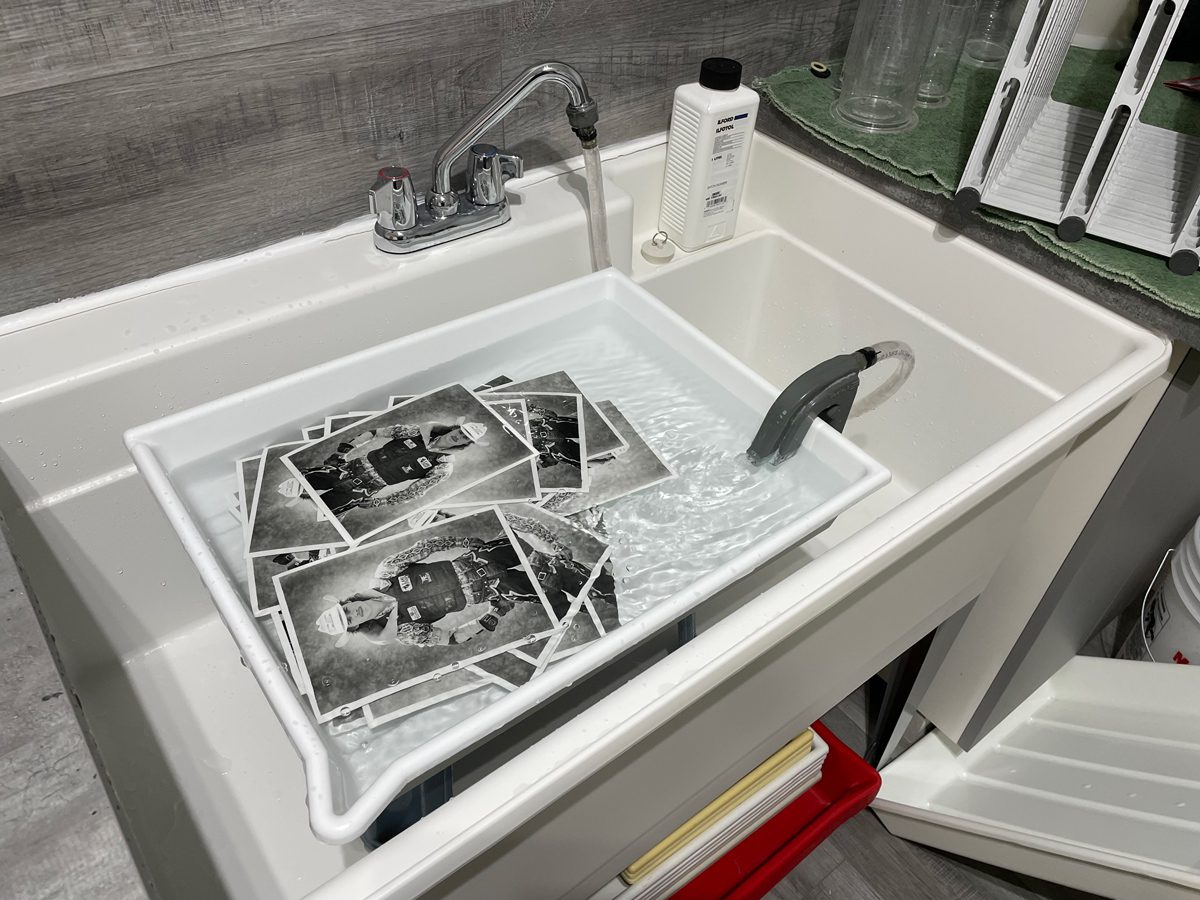
Paper
While printing I use the liquid Multigrade paper developer. I’m not sure if it’s as popular as the powder developers, but I find it works great. I use two types of paper, for contact prints and 5x7 work prints I use the new Multigrade 5 RC in the glossy finish, and for the final prints I use the new FB version of the paper, again in the gloss.
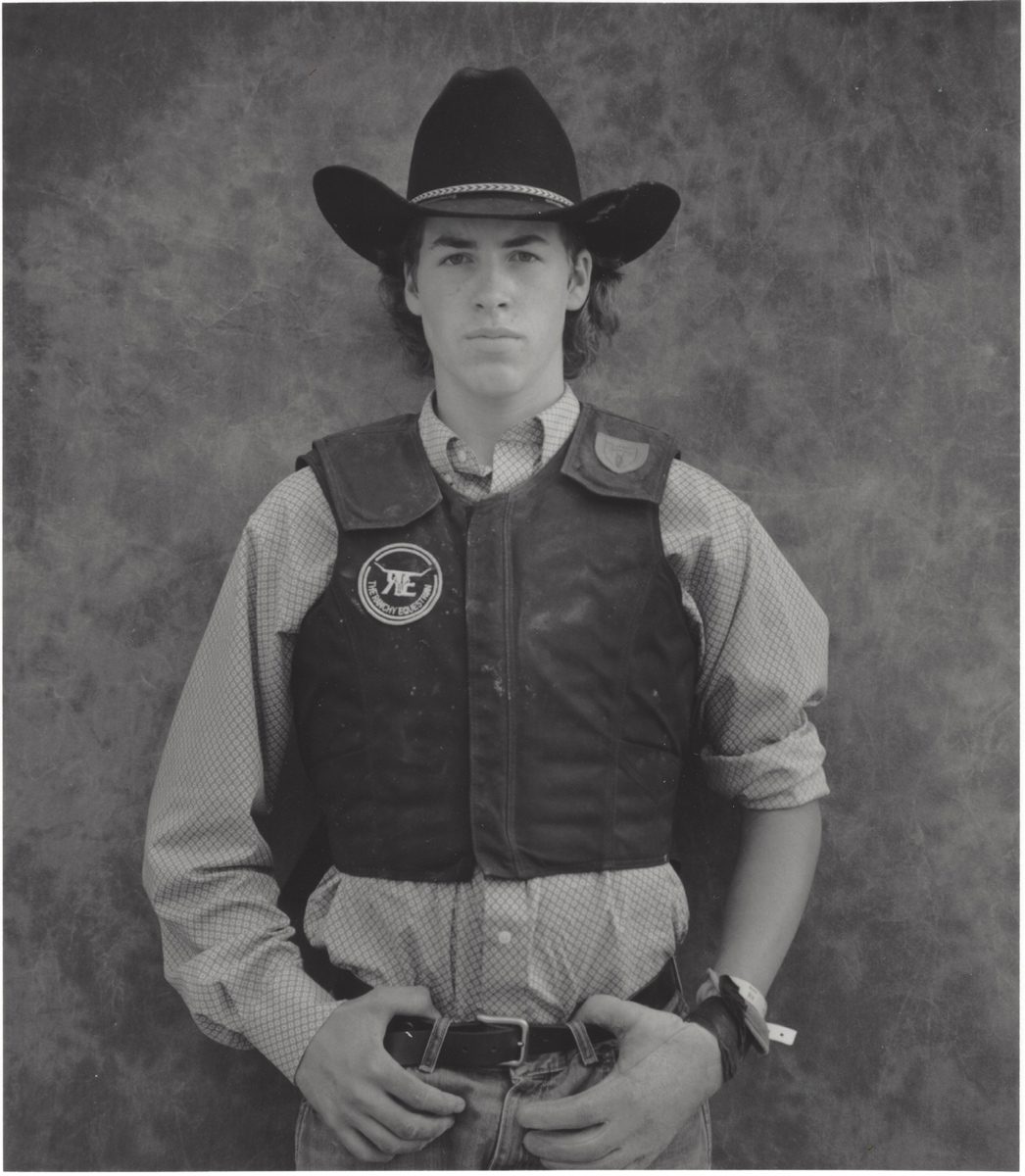
Gallery Show In Mind
I’m always shooting and printing with a gallery show in mind. I had a large solo show on street photography just before Covid changed the world and had a major show of street portraits last fall at the Berlin Gallery. I don’t have a gallery booked for the cowboy work but I’ll set that up once I have the photos taken.
Postcards
Besides the gallery show, a second thing I do is make postcards in the darkroom. These are postcard size prints, I use 5x7 but true postcards are a bit smaller, and mail them around. I’m part of a postcard exchange, so a group of photographers are doing the same thing, but I also mail them to various art directors and gallery curators. I send these unsolicited postcards to the art directors at magazines like RollingStone, Vogue and Vanity Fair, all magazines I’d be happy to do assignment work for. I also mail one to the curators of top galleries, like the National Portrait Gallery in London, The Met and the Louvre. They might never call me, and I can live with that, but I’d hate to have regrets down the road that I didn’t promote my work at the best galleries.
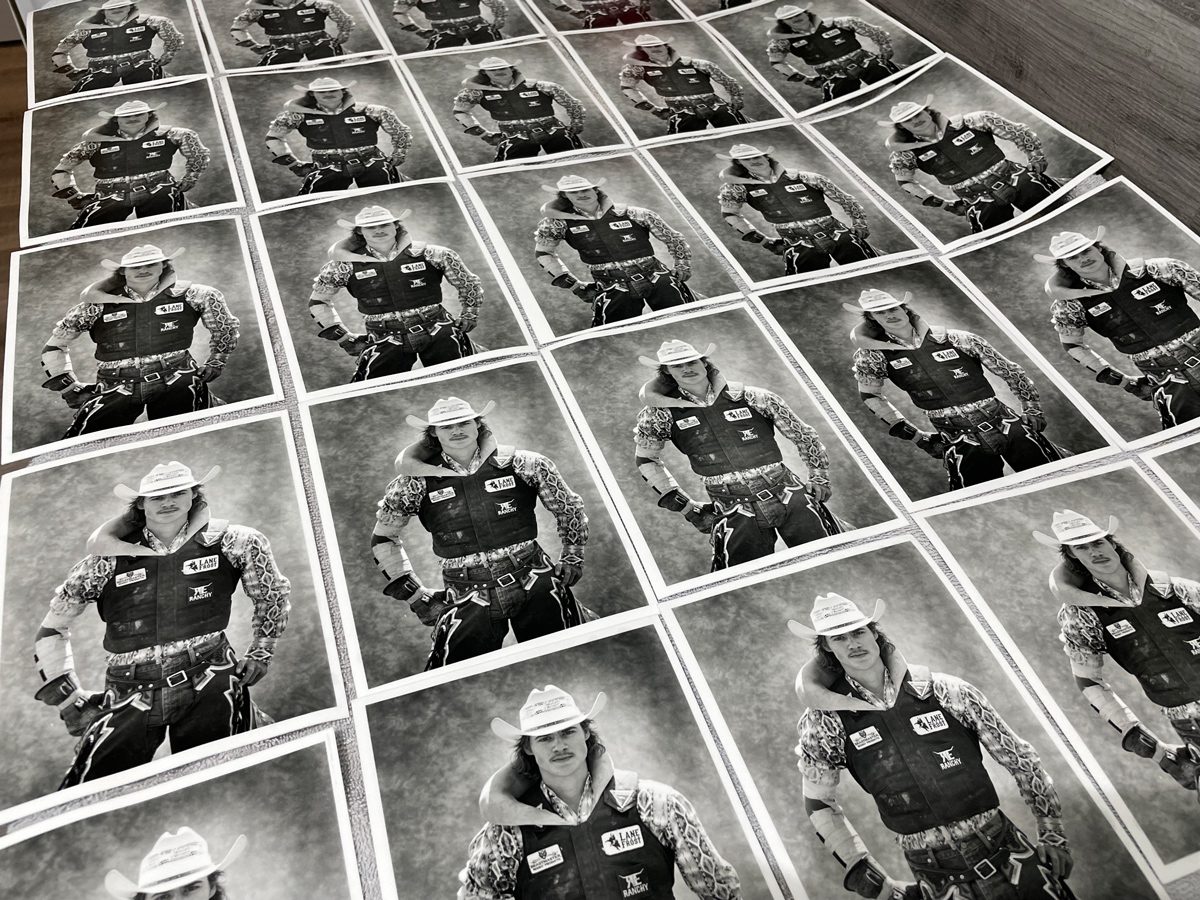
Images ©Rob Skeoch
About The Author

Rob Skeoch
ROB SKEOCH (1959-), is an award-winning photographer whose work has appeared in magazines and books published around the world. He grew up in Burlington, Canada, and began making photographs for the high school yearbook in 1974. He’s remained in love with photography since then, working at a number of newspapers, freelancing for years, a manager at the camera division at Sony of Canada and producing this series of portraits of grassroots rodeo cowboys.
Cowboys are not only a group working with cattle, but a sub-culture that represents an ever shrinking group with strong ties to Canadian heritage but with a questionable future and place in modern society.
The series on cowboys was inspired by the work of fashion and portrait photographer Irving Penn who traveled the world creating portraits in a small studio that he hauled around with him and set-up at each location. Rob sets up his studio right next to the cattle corrals at the small rodeos he attends in Canada.
This project, was shot on ILFORD HP5+ film with either a Rollei FT camera shooting 120 film, or a Nikon F3 shooting 35mm. Images are printed in a conventional darkroom, using ILFORD Multigrade RC Glossy for work prints and ILFORD Multigrade Fibre Base Classic Glossy for gallery prints.
Rob’s previous project was street portraits shot in a gritty part of Hamilton, Canada using a wood 4×10 panorama camera and ILFORD black and white films. The work was shown at the Berlin Gallery in the fall of 2022.
Youtube Channel – Still Shooting in Black and White
Facebook – Rob Skeoch
Instagram – SharkBaitMedia



